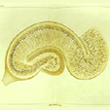Tuesday, 27 November 2012
Links on How Memory Works (continued)
 Research on human memory is such an important aspect of cognitive neuroscience today that a tremendous number of articles about memory research can be found on the Internet. So this week, I am continuing last week’s list of new links to articles about various aspects of how memory works—one of the sub-topics covered under the topic Memory and the Brain in The Brain from Top to Bottom. For each link, I provide a brief description of the article in question.
Research on human memory is such an important aspect of cognitive neuroscience today that a tremendous number of articles about memory research can be found on the Internet. So this week, I am continuing last week’s list of new links to articles about various aspects of how memory works—one of the sub-topics covered under the topic Memory and the Brain in The Brain from Top to Bottom. For each link, I provide a brief description of the article in question.
(For more background on how I compile these lists, see my earlier post on Links About Brain Anatomy.)
Molecular Level
Transgenic rats that manufacture more of the NR2B subunit on their NMDA receptors have a better memory than other breeds of rats.
![]() Scientists uncover a central process in memory encoding
Scientists uncover a central process in memory encoding
For the new proteins associated with long-term memory to be manufactured in the brain, other proteins that prevent the transcription of RNA must be degraded.
![]() More than synaptic plasticity: role of nonsynaptic plasticity in learning and memory
More than synaptic plasticity: role of nonsynaptic plasticity in learning and memory
Changes in the efficiency of synaptic transmission are not the only changes involved in forming memories. Nonsynaptic processes, such as the modulation of membrane conductance, may affect the excitability of neurons and thus contribute to synaptic changes directly or indirectly.
Structure and functions of the AMPA receptor for glutamate, which is involved in synaptic transmission and synaptic plasticity.
Structure and functions of the NMDA receptor for glutamate, a predominant factor controlling synaptic plasticity.
Cellular Level
![]() A Functional Role for Adult Hippocampal Neurogenesis in Spatial Pattern Separation
A Functional Role for Adult Hippocampal Neurogenesis in Spatial Pattern Separation
Neurogenesis may be necessary for the dentate gyrus of adult mice to distinguish patterns that are close to each other in space.
Neurological Level
![]() Eye movements reveal unconscious memory retrieval
Eye movements reveal unconscious memory retrieval
A form of implicit memory activates the hippocampus even when individuals are not aware that they are retrieving something from memory, but seems to require the prefrontal cortex when they succeed in recalling an association consciously and correctly.
Psychological Level
![]() Reading the contents of working memory
Reading the contents of working memory
This article describes two potential mechanisms as the neuronal basis for working memory, and visual working memory in particular.
![]() Randall Engle’s Attention and Working Memory Lab
Randall Engle’s Attention and Working Memory Lab
Recent articles about working memory, by Randall Engle, with some original tools for navigating through them.
![]() Conscious and Unconscious Memory Systems of the Mammalian Brain
Conscious and Unconscious Memory Systems of the Mammalian Brain
Video of a lecture by Larry R. Squire on the various memory systems in humans and other mammals.
![]() Memory and Brain Systems: 1969–2009
Memory and Brain Systems: 1969–2009
Larry R. Squire, whose own research deals with the various human memory systems, reviews the highlights of the past 40 years of research on memory and the brain systems that support it.
Memory and the Brain | Comments Closed







